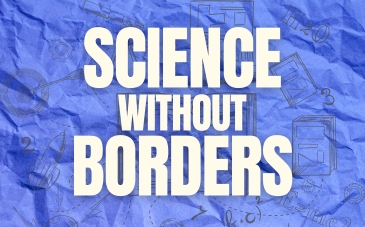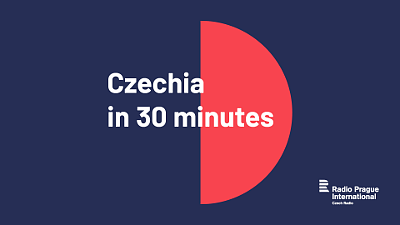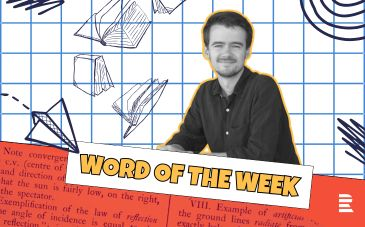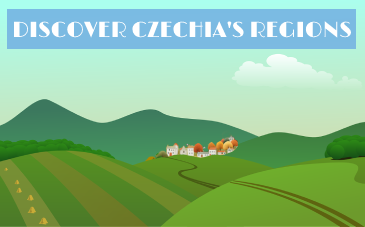Jews gather in Moravian town of Holešov to honor Rabbi Shakh's legacy
Dozens of observant Jews will soon gather in the small South Moravian town of Holešov to honor Rabbi Shabtai ha-Kohen, or Shakh, on the anniversary of his death, more than three centuries ago. I spoke with Jakub Schwab, a tour guide and cantor in Brno, to understand what makes Shakh so important to the Orthodox Jewish community.
“Rabbi Schach was a 17th-century scholar. His main book is called Schach, so he is basically named after the book. This piece of writing is a commentary on the codex of Jewish law called the Shulchan Aruch. The Shulchan Aruch was published in the 1500s, and Schach was one of its early commentators.
"An interesting fact is that he completed the entire commentary on the codex while he was about 20 years old. By the time he was 24, it had already been published with corrections for the second time. During all this time, he was in Lithuania."
So how did he come to settle in the Moravian town of Holešov?
"After the Thirty Years' War in Europe, some local conflicts in Eastern Europe were still ongoing. One of the major ones was the Cossack uprising led by Bohdan Khmelnytsky in what is now eastern Poland, Ukraine, and Lithuania. Jews were one of the main targets of the violent mobs.
"As a result, Europe became filled with Jewish refugees fleeing from Poland, Lithuania, and Ukraine to the West and South. Schach, who was already a member of the rabbinical court in Vilna, was among these refugees.
"He first arrived in Prague. However, during this time, Europe was full of rabbis, and finding a position was not easy. Even Schach, who had been part of one of the most important rabbinical courts in Eastern Europe, had to accept a position that did not match his stature.
"He first became a rabbi in Strážnice, a small town on what is today the Czech-Slovak border. After spending a few years there, he was offered a position in the community of Holešov. This was a larger and more significant community, so he accepted. Unfortunately, Schach died very young, at just 41 years old. He spent only a little more than two years in Holešov."
Why do so many people visit his grave? Why is he still such an important figure for observant Jews?
"First of all, his commentary on the Shulchan Aruch is still being published and studied in religious academies today. It remains a fundamental source for Jewish law.
"Secondly, visiting the graves of holy tzaddikim (righteous sages) is a longstanding tradition, mainly among the Hasidim—a specific group within the ultra-Orthodox Jewish community.
“In recent years, with international travel becoming much easier, pilgrimages to the graves of revered rabbis have become increasingly common. Schach is part of this lineage.
"Additionally, there are still thousands of people, even among the Hasidim, who claim direct descent from Schach."
Speaking of descendants, I understand that you have a personal connection to the Holešov Jewish community. Could you share some details with us?
"Yes. I've recently discovered that my great-great-great-grandmother was born there in the 1860s. Her parents are both buried in the local Jewish cemetery, not far from Schach’s grave.
"One of her brothers was also the last mayor of the political municipality of Holešov before it ceased to exist in 1921. So, that's my personal connection to Holešov."
What about the Jewish heritage in Holešov? Does the synagogue where Schach served still stand today?
"Yes, the synagogue is still there. It was built before he arrived, around the 1560s. It survived the Nazi era, ironically, because it had not been in use as a synagogue for some time before the war.
"By then, the Jewish community had built a newer, larger synagogue, which they were using instead. That newer synagogue was considered more significant and so it was destroyed.
“Holešov, even among the local population, had a history of strong anti-Semitic sentiments. In fact, the last pre-World War II pogrom against Jews in the Czech lands occurred in Holešov in 1921.
"Because the old synagogue was no longer in active use, it was spared from destruction. That's why we still have it today. The Jewish cemetery is also a major site and is well maintained, along with its ceremonial hall."
Finally, how many members of the original Jewish community survived the Holocaust? Do we have any idea?
"Very few. Unlike some other places, the Jewish community in Holešov was never re-established after 1945. From what I know, only a few people returned. Mainly, there were two families: the Ehrlich family—incidentally, my great-great-great-grandmother was born Ehrlich, so they are my distant relatives—and the Michalowski family.
"There may have been a few more individuals, but the Jewish community was never revived. I believe the number of Holocaust survivors from Holešov was in the lower tens."
The Jewish community in Holešov dates back to the 15th century and was home to the 17th-century scholar and rabbi, Shakh. By the 19th century, around 1,700 Jews lived in the town. The community was decimated by the Nazis during World War II. Built in 1560, Shakh’s synagogue is the fourth oldest in Czechia. Together with the local cemetery, they are among the country’s most significant Jewish heritage sites.











